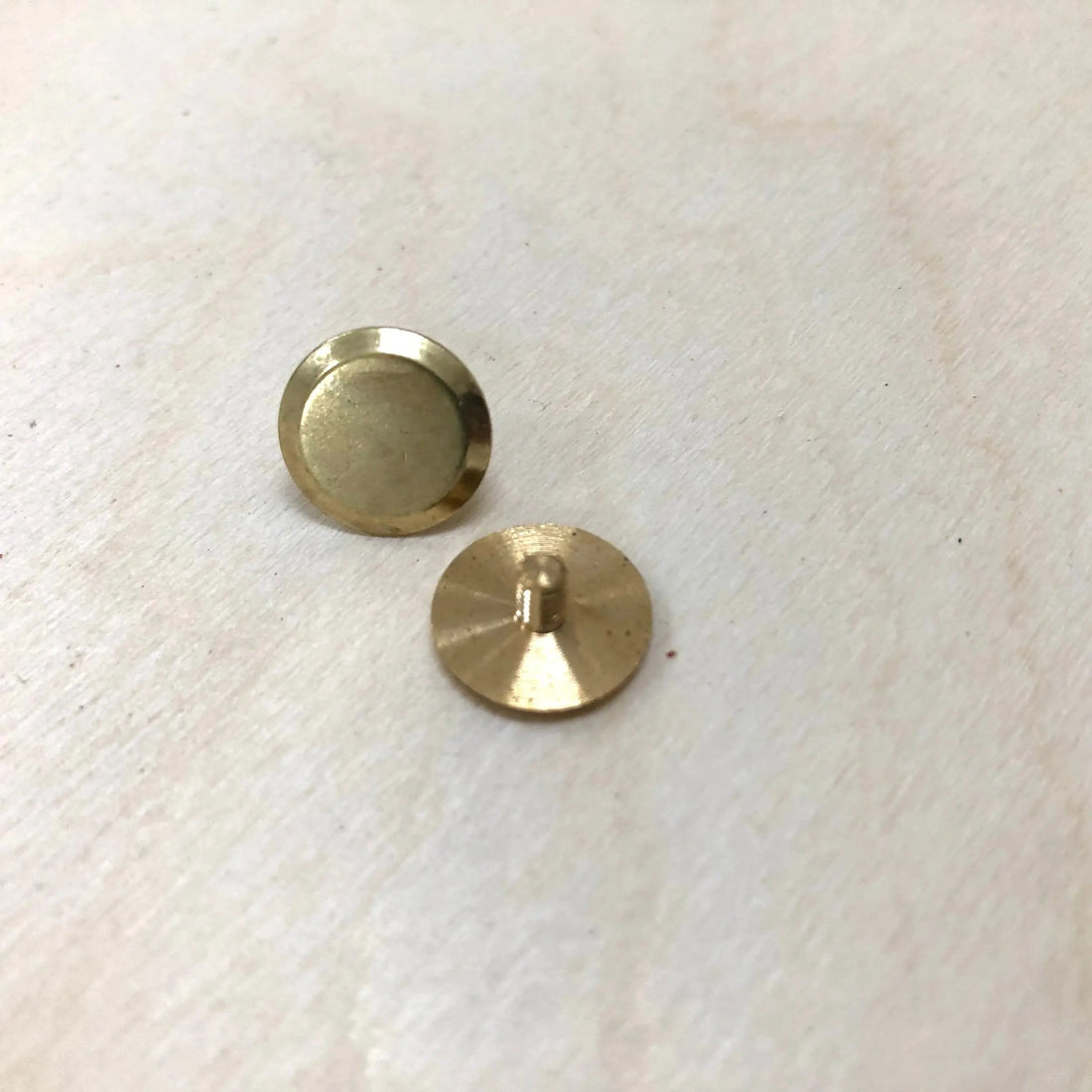
5 Common Mistakes When Using Chicago Screws (And How to Avoid Them)
Share
5 Common Mistakes When Using Chicago Screws (And How to Avoid Them)
When it comes to securing leather projects, few fasteners are as reliable and functional as Chicago screws. These versatile, two-part fasteners are a favourite among leather crafters and DIY enthusiasts for their strength, reusability, and clean finish. However, using them isn't always as straightforward as it seems. Mistakes can happen, and these can lead to issues like loosening screws, misalignment, or damage to your leather masterpiece.
To help you make the most of Chicago screws, we’ve outlined five common mistakes people make when working with them—and, more importantly, how you can avoid them.

1. Using the Wrong Screw Length
Why It's a Problem
One of the most frequent mistakes is selecting screws that are either too short or too long for the project. If the screw is too short, it won’t secure the materials properly, leading to weak connections or outright failure. On the other hand, if it’s too long, the screw may stick out awkwardly, creating an unprofessional look and reducing comfort for items like belts.
How to Avoid It
Always measure the thickness of the materials you’re fastening before selecting your Chicago screws. The length of the post should closely match the combined thickness of your leather layers. A small tolerance of around 1 mm is acceptable, but anything beyond that can cause issues. Consider purchasing a multi-size set of Chicago screws to have options for various projects. Having a digital calliper at hand can also help ensure precise measurements.
2. Over-Tightening the Screws
Why It's a Problem
Over-tightening Chicago screws may seem like a good way to ensure they stay secure, but it can actually damage your leather. Over-tightening can compress the material excessively, leading to indentations or even tears in delicate leather surfaces. You might also end up stripping the threads of the screw, making it unusable.
How to Avoid It
Tighten the screws just enough to hold the leather firmly without distorting it. Most Chicago screws have a slotted or hex-shaped head for precise adjustments. Use an appropriate screwdriver or hex key to turn the screw slowly, stopping as soon as you feel resistance. If available, thread-locking adhesive can add extra security without requiring excessive tightening.
3. Ignoring Thread Locking
Why It's a Problem
A common frustration with Chicago screws is their tendency to work loose over time, particularly in items subjected to frequent movement or stress, such as belts, bags, or harnesses. If the screws aren’t adequately secured, they could fall out, leaving your project incomplete—or worse, leading to lost fasteners.
How to Avoid It
Always consider using a thread-locking solution, especially for projects with moving parts. Thread-locking adhesives like Loctite are ideal for keeping screws securely in place. A small dab on the threads of the screw post can prevent loosening while still allowing future adjustments if needed. Just be cautious not to use too much adhesive, as excess can seep onto the leather and leave a stain.
4. Misalignment During Assembly
Why It's a Problem
Misalignment happens when the holes in your leather pieces don’t line up perfectly, making it difficult to thread the Chicago screws smoothly. Forcing a misaligned screw can damage both the fastener and the leather, resulting in a messy finish and weakened structural integrity.
How to Avoid It
Preparation is key to avoiding alignment issues. Use tools like leather punches or hole punches to create clean, evenly spaced holes in your material. Mark the placement points carefully using a ruler or template to ensure precision. Before fully tightening the screws, double-check that all the holes align correctly, allowing the post and cap to connect effortlessly.
5. Using Poor-Quality Screws
Why It's a Problem
Not all Chicago screws are created equal. Opting for low-quality fasteners can lead to various issues, from poor threading to rust or tarnish over time. Cheap screws are more likely to strip, break, or fail under pressure, especially for larger or weight-bearing projects.
How to Avoid It
Invest in high-quality Chicago screws made from durable materials like stainless steel, brass, or coated alloys. These materials are not only stronger but also resistant to rust and corrosion. Look for trusted suppliers or brands that offer guarantees on their products. Spending a bit more upfront can save you considerable frustration down the line.
Pro Tip: Keep Spare Screws Handy
Even with meticulous care, accidents can happen. Having a small collection of spare Chicago screws in various sizes and finishes ensures you won’t be caught unprepared if you lose or damage a fastener. Store them in a labeled, organised container to make finding the right screw quick and hassle-free.
Don’t Compromise on Quality or Craftsmanship
Chicago screws are an essential component for many leather projects, but they require proper use to maximise their performance. By avoiding common mistakes like using the wrong screw length or failing to address alignment, you can save time, preserve your materials, and produce professional-grade results. Whether you’re crafting elegant leather belts or robust bag straps, these tips will help ensure your projects are as durable and polished as possible.
Feeling inspired to elevate your leatherworking skills? Brush up on the finer details and explore our comprehensive leather crafting resources at British Leather Supplies.
